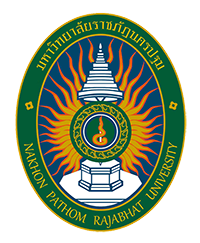 การประชุมวิชาการระดับชาติ ครั้งที่ 16
|
| Title | Assessing the Cassava Production Technology by Crop Models in Enhancing Cassava Production Efficiency in Soil Series Group 29 Lopburi Province |
|---|---|
| Other Titles: | การทดสอบเทคโนโลยีการผลิตมันสำปะหลังจากแบบจำลองพืชเพื่อเพิ่มประสิทธิภาพการผลิตมันสำปะหลังในกลุ่มชุดดินที่ 29 จังหวัดลพบุรี |
| Authors EN |
|
| Authors TH |
|
| Keywords | Crop models, Cassava, Chemical fertilizer |
| Issue Date | 13-Aug-2024 |
| Publisher | The 16th NPRU National Academic Conference Nakhon Pathom Rajabhat University |
| Abstract | This study aimed to assess the effectiveness of employing crop models to enhance cassava production efficiency in soil series group 29 at Lopburi province. The research focused on developing cassava production technology using crop models. The methodology involved simulating cassava production to evaluate yields under diverse management conditions. Furthermore, critical management factors were explored using the decision tree model technique to pinpoint a technology set conducive to efficient cassava production. Significant adjustments involved augmenting nitrogen phosphorus and potassium chemical fertilize informed by soil analysis values. In February to December, planting occurred with a cassava population of 1,800 to 2,000 plants per rai, utilizing CMR 33-38-48 varieties. Subsequently, the developed technology underwent testing with 10 farmers, comparing it against conventional farming methods. Carried out from March 2022 to January 2023 in Nong Muang District, Lopburi Province. The results revealed statistically significant differences in cassava yields, with the test method yielding an average of 5,864 kilograms per rai, compared to 5,426 kilograms per rai for farmers' methods. Moreover, the test method demonstrated higher yields, with an increase of 438 kilograms per rai, representing a 8.07 percent improvement. In terms of percentage starch in cassava roots is statistically no significant, with the test method of 25.98 percent, and 25.23 percent for farmers' methods. In terms of production costs, the test method exhibited an average cost of 6,837 baht per rai, with increase 406 baht per rai representing a 5.61 percent higher than the average farmer's method. Regarding income, the test method generated an average of 19,058 baht per rai, with an increase of 1,424 baht per rai marking a 8.07 percent increase compared to farmers' methods. When evaluating net income, the test method yielded an average of 12,221 baht per rai, with an increase of 1,829 baht per rai marking a 17.60 percent higher than farmers' methods. The benefic cost ratio (BCR) for the test method was 2.75, surpassing the 2.39 ratio for farmers' methods, indicative of a superior return on investment. These findings underscore the potential of crop models to optimize cassava production and enhance profitability for farmers soil series group 29 at Lopburi Province. |
| ISBN | 978-974-7063-46-2 |
| URI | https://rdi.npru.ac.th/conference16 |